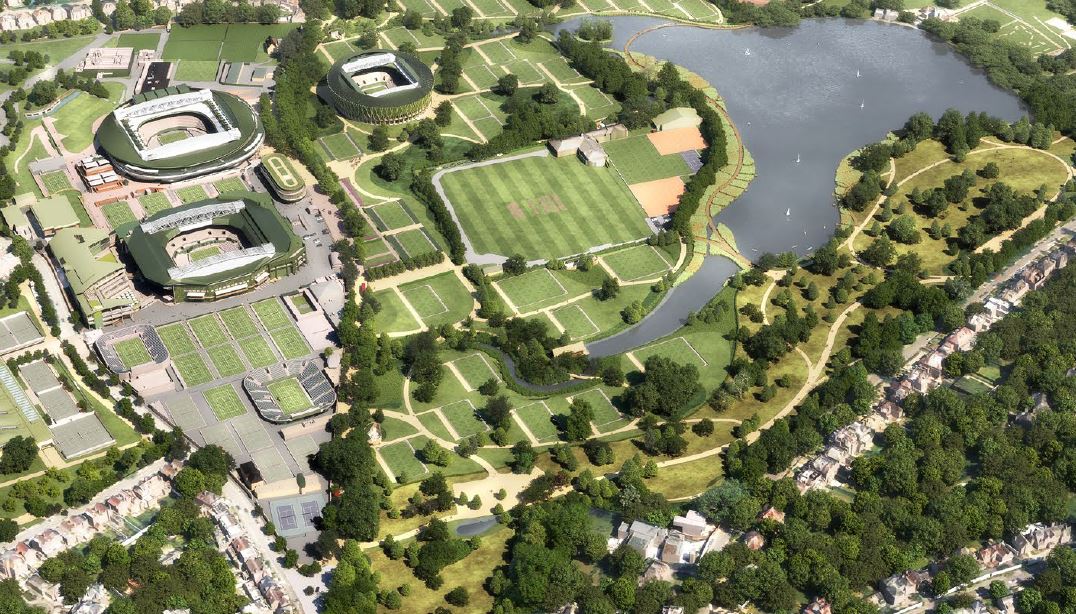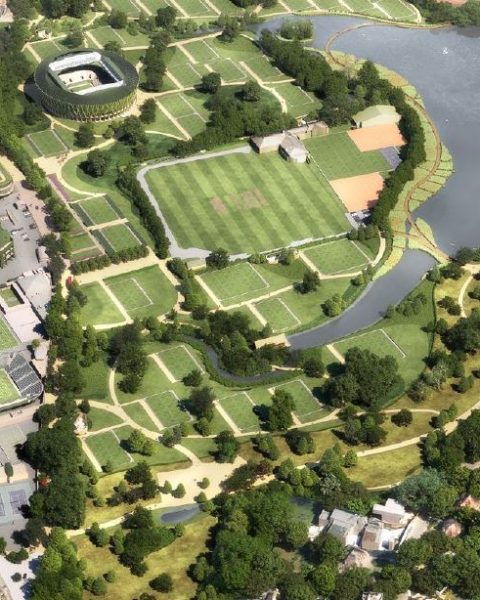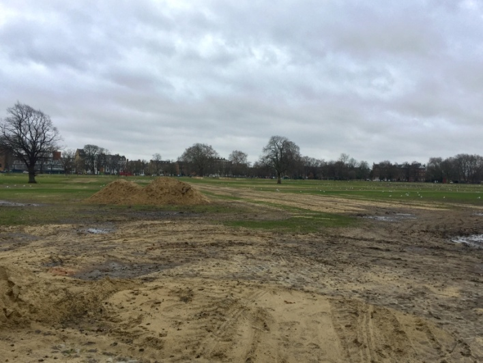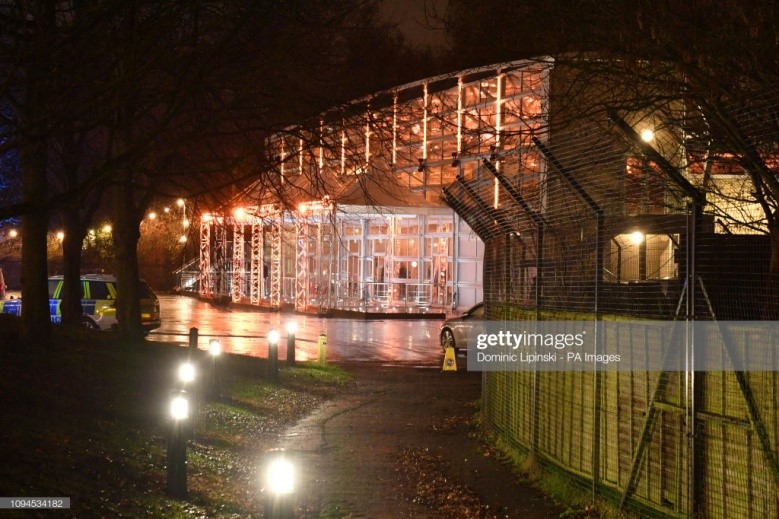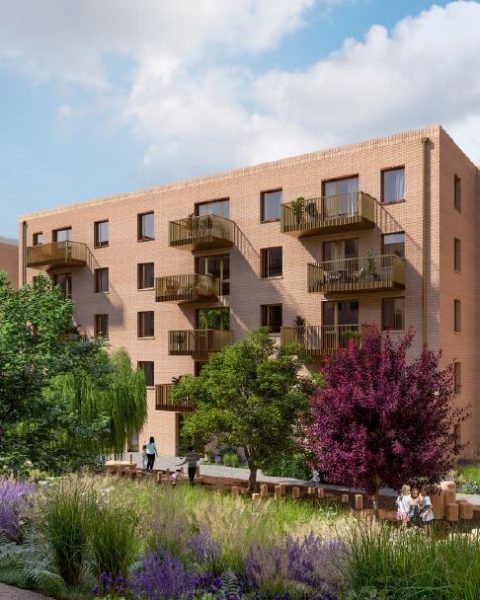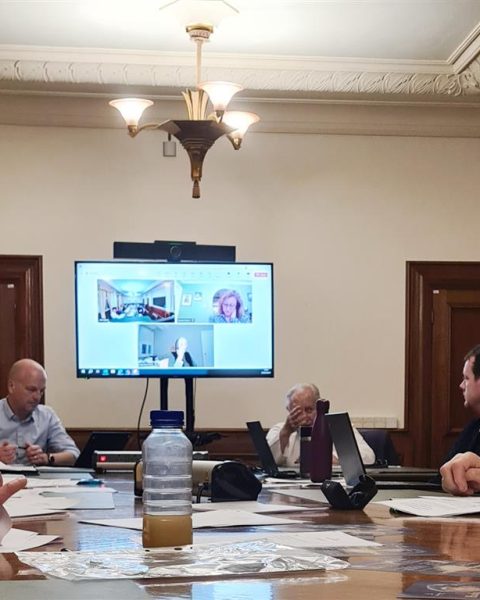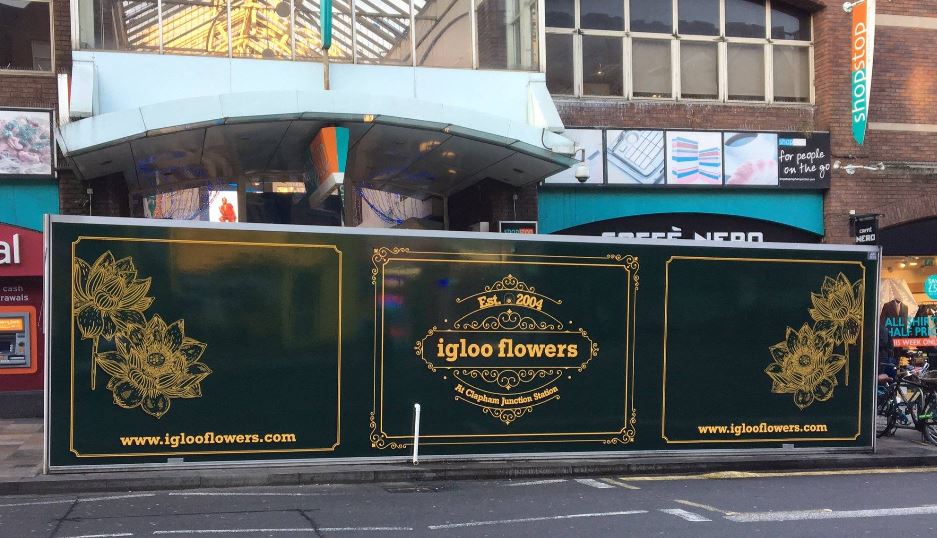Yesterday night, Wandsworth Planning Committee voted to reject a significant expansion of the All England Lawn Tennis Club’s grounds (AELTC), which hosts the Wimbledon championships. The decision came less than one month after Merton councillors approved the proposal.
The members of Wandsworth Planning Committee voted 7-0 to follow the recommendation of the officer’s report to reject the AELTC application to expand the Wimbledon championship venue onto a substantial portion of Wimbledon Park.
As the plan was approved by Merton Council but rejected by Wandsworth Council, the next stage should involve scrutiny by the Mayor of London.
The plans, initially presented in 2021, aim to expand across Church Road to build an 8,000-seat stadium, an additional 38 grass courts, 10 other buildings, and 9kms of roads and paths at the former location of the Wimbledon Park Golf Course. The Wimbledon Tennis site would almost triple in size.
This development would enable Wimbledon to hold its qualifying tournaments on the grand slam site (SW19 location) instead of their present location a few miles away in Roehampton. Moreover, it would increase the championship’s capacity from 42,000 to 50,000 spectators. The AELTC’s outlined plans, set to be finalized by 2030, also involve creating 23 acres of parkland partly accessible to the public.
The Wimbledon Park Golf Course was open to members with guests and visitors (£70/day), and anyone could play on the whole golf course until AELTC closed it definitely in 2019.
The All England Tennis Club plans something very different where only a small portion could be accessed, and subject to restrictions. The Wimbledon Society said:
“The only perceivable benefit offered to local residents is the small park that the AELTC are proposing within this scheme. But the park is not held in trust as a community benefit, it’s part of their complex. They will “permit” access, can close it at any time at their whim or take it away completely. Anyone from Merton could play on the whole golf course, which the AELTC have closed. It may never be open to the public again: ‘Once it’s gone, it’s gone.'”
Merton Council bought the land in 1965 on trust for the public. The All England Club purchased the freehold of the golf course from Merton Council for £5.2 million in 1993.
Under a lease set to terminate on 7 May 2041, the AELTC rented the land to Wimbledon Park Golf Club. However, to enlarge the championships’ scope and facilitate hosting preliminary matches on the premises, the tennis club proposed a buyout of the golf club’s lease for £65 million to end its lease early, convinced that they could quickly obtain the permission they wanted in order to expand. The deal was accepted, with long-time members of the club, including celebrities like Piers Morgan, receiving £85,000 in compensation to renounce playing golf on the site.
When Merton Council sold the freehold to AELTC, the tennis club entered into a legal covenant that prohibited any use of the land aside from leisure, recreation, or as an open space. In addition, objectors believe that the trust is still binding and therefore the land cannot be built on.
The convenant is a legal document that was agreed by the then Leader of Merton Council and AELTC on 24 September 1993. It said that:
“The golf course land will be retained as open space. The whole stretch has been designated Metropolitan Open Land. We have declared it a conservation area and placed strong covenants on the sale.”
The Chairman of the All England Lawn Tennis Club responded at the time:
“We completely understand and support everyone’s determination to keep the land open and we have purchased the land on that basis.”
However, this is now contradicted by the elements shown above; a large piece of the land will be inaccessible to the public, especially around the Championship time.
Opposition Merton councillors attempted to halt the All England Lawn Tennis Club’s plan with a motion on 2 February 2022 requiring the council to “enforce” the covenants preventing construction on listed parkland. However, Merton’s Labour amended and passed the motion with a much milder wording to emphasize the “need to be respected” rather than enforced. Merton Libdems tried once again during a full Council meeting on 16 November to enforce the covenant and ensure “the land will be retained as open space” unlike the plan presented by AELTC.
While Merton’s Labour councillors approved the plans, in a very strange and unprecedented move, Councillor Ross Garrod, the Labour leader of the Merton Council, seemed to question the legality of the decision of his own councillors. In his letter, Councillor Garrod wrote:
“The Wimbledon Park Golf Course is subject to restrictive covenants established in the 1993 transfer to All England Lawn Tennis Ground (AELTG). These restrictive covenants include requirements for the owner to use the land only for leisure and recreation or as an open space and places restrictions on the erection of buildings. The development for which planning consent has been granted cannot commence without addressing the restrictive covenants in the 1993 transfer.
I would be grateful if you could advise how you intend to implement the planning consent, if granted, without breaching the restrictive covenants.”
During a special meeting organised by Merton Council on 15 November, it was explained that there are 2 ways to circumvent the legal requirement: Either ask the council to release or modify the covenant, as the council is the party with the benefit of the covenant in its capacity as landowner of the adjoining Wimbledon Park; and/or seek a discharge by making an application to the Upper Tribunal (Lands Chamber).
At the time of this article, AELTC has not explained how they intend to proceed. However, they have always declared that they does not see any real issue with the convenant.
In February last year, opposition Merton councillors attempted to halt the All England Lawn Tennis Club’s plan with a motion requiring the council to “enforce” the covenants preventing construction on listed parkland. However, Merton’s Labour amended and passed the motion with a much milder wording to emphasize the “need to be respected” rather than enforced.
Opposition Merton councillors tried once again during the November meeting to “keep promises made to residents” and enforce the covenant and ensure “the land will be retained as open space” unlike the plan presented by AELTC. Merton Cllr Jill Hall especially said that Merton should keep the promise they made and questioned how they could then be trusted in keeping the new smaller park AELTC is dedicating to public. Labour majority councillors voted against the amendment which was therefore rejected.
Watch the full debate on the covenant in the video.
A precedent with a decision for the use of Wandsworth Common
In July 2017, a High Court judge ruled that Wandsworth Council acted unlawfully in offering a lease for the use of Neal’s Lodge as a private fee-paying nursery. Such use would effectively restrict its availability to all but the more privileged local residents.
Mrs. Justice Lang said that clubs or golf courses can’t stop the public from using them, unlike giving a lease for a private nursery which would restrict access to the few children and families registered with the facility. The judge said:
“The grant of a lease to the [nursery] for 15 years will prevent any public use of the premises for a significant period of time. In my judgement […] the nursery does not provide facilities for public recreation. […]”.
The decision was based on the fact that the Council does not have powers under the 1967 Greater London Parks and Open Spaces Provisional Order (“the Long Act”).
However, at the time of the decision to approve the proposal, the Planning Applications Committee was advised that the restrictions in the Long Act were not a planning consideration. It draws similarity to Merton’s committee being advised that the covenant is not a material consideration for the planning decision (see below).
Wandsworth Council appealed the decision but subsequently lost as the initial decision to declare the planning application unlawful was confirmed.
Officers in Merton and in Wandsworth disagree
In a 456 page report, Merton’s planning officers recommended approval, based on the benefits they think it would generate.
While they concluded that the development would be “inappropriate” and cause “physical harm” to the Metropolitan Open Land, they said this was outweighed by the “very substantial public benefits” of the proposal (including employment, park enhancement, and additional sport facilities) which are “very special circumstances” justifying development on protected land.
In their report, Merton officers concluded:
“The proposed development would be inappropriate and would therefore result in definitional harm” and contrary to paragraph 147 of the National Planning Policy Framework [NPPF] which outlines “Inappropriate development is, by definition, harmful to the Green Belt (and by extension MOL).”
However, they later said:
“Officers consider the proposed development would carry substantial public benefits which amount to Very Circumstances (VSC) that demonstrate harm to the MOL, and any other harm, is clearly outweighed by other material considerations.”
And Merton officers considered that the convenant which prevents the proposal is “not per se considered to be a material consideration in the determination of a planning application for that development“. They said:
“Officers are satisfied that the existence of the restrictive covenants are not of themselves matters to which the Council is required to have regard to”.
In fact, the Council might have to regard it if the AELTC wish to modify the document.
Wandsworth officers’ report does not only differ in size (“only” 123 pages) but also in its conclusion as they recommend a refusal of the planning permission. They also quote paragraph 147 of the NPPF but conclude differently from Merton’s officers. They say:
“By reason of the substantial harm to and loss of visual and spatial openness identified to Metropolitan Open Land, the development would constitute inappropriate development. It is not considered that there are any Very Special Circumstances that clearly outweighs this harm, contrary to London Plan policy G3 and NPPF paragraphs 147, 148 and 149.”
And, unlike Merton, they do not consider that it carries sufficient benefits as they conclude:
“The proposed development would result in the net loss of open space/green infrastructure by reason of the development of substantial areas of parts of the site that are primarily grass, with no replacement provision provided, contrary to Policy LP53. It is not considered that the benefits of the development clearly outweigh the harm caused by the loss of open space, contrary to Local Plan Policy LP53 and the NPPF (2023) paragraph 99.”
It should be noted that, while acknowledging that the covenant carries little weight in the planning consideration, they disagree with their colleagues from Merton and wrote:
“Officers have taken the view that it is arguable that the restrictive covenants as they relate to deliverability may be capable of being a material consideration.”
A slightly different procedure for Wandsworth Council
Although Merton Council’s planning committee has agreed to the project, Wandsworth Council had to vote on it on Tuesday 21 October, as it crosses into their area.
Unlike Merton where applicants and other individuals were able to make representations, this is not authorised in Wandsworth Council.
More than 70 local and environmental campaigners gathered from 6 pm ahead of the meeting to demonstrate their opposition to the plan.
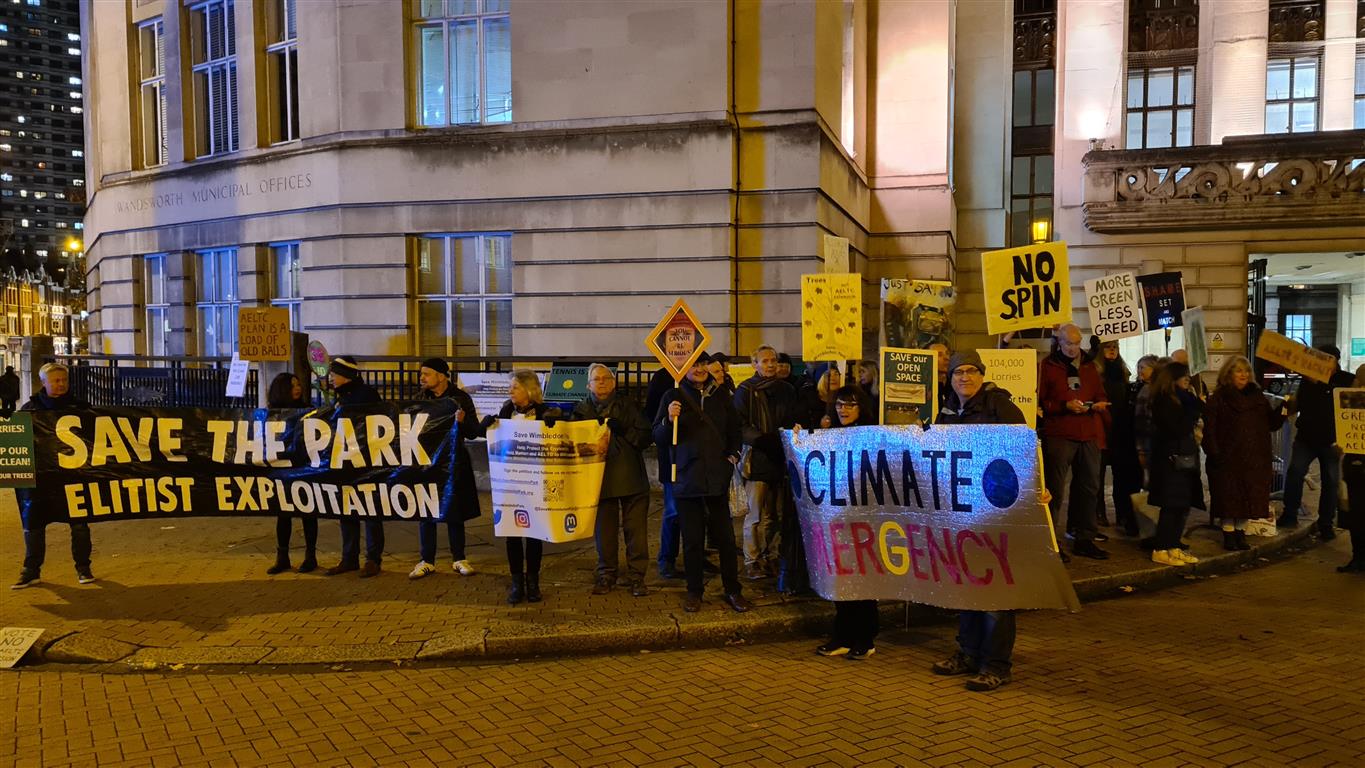
The Wandsworth’s Planning Application Committee meeting started at 7:30 pm with the AELTC as the first item on the agenda. After two hours of questions from the councillors, it was time for some of them to make comments explaining their votes.
The sentiment expressed throughout the discussion remained largely consistent. Councillor Humphries deplored the failure to show better justifications for what the developers were proposing. Councillor Govindia said, “There is a plan in there somewhere; this is not it,” and explained that there is an issue with the balance of the national and international reputation of the tennis centre versus the interests of the wider local population. Councillor Colclough stated that while he wasn’t against development on Open Land or the Green Belt, it had to bring about a substantial, “life-changing” benefit, which, in his view, was lacking in the Tennis Club proposal. Ultimately, it was only the chair, Councillor Belton, who expressed some degree of support, saying:
“Grass is difficult to maintain, costly, all sorts of things. Therefore I don’t think Wimbledon is in a such strong position as people assume”.
However he also added:
“It would have done the AELTC a little bit of good to admit that and spend a bit more effort and time in justifying the very special circumstances and making sure the public locally was on board in the consultation”.
Out of the 9 committee members (usually 10, but in that case Cllr Leonie Cooper could not participate as she already expressed opposition), seven councillors voted to refuse permission, and the chair abstained. No one voted in favour of the proposal.
It should be noted that there was a minor incident just before the votes were cast when an officer observed that one councillor had briefly left the room during the debate and, therefore, should not be allowed to vote. Councillor Belton mentioned that often MPs leave the chamber during debate but can still vote at the end. However, he chose not to challenge this, as he believed it would not alter the result. This explained the 7 votes and not eight.
You can watch the final comments and the voting process at the meeting in the provided video.
The Mayor of London is allegedly in favour of the scheme
Now Sadiq Khan, the Mayor of London, could make the final decision. The Telegraph reported that the Mayor was expected to review the controversial plans, but Sadiq Khan will ask Deputy Mayor Jules Pipe instead. Apparently, Mr. Khan has decided to recuse himself following comments made during a video interview with The Wimbledon Channel in July 2021, implying some general support for the project. He said:
“We have been working really closely with Wimbledon and I give them credit for the collegiate way they have been working with the local community, with the local councils, with us and City Hall, to make sure we can add value to the world’s premier tennis tournament. I think this development will future proof Wimbledon for years to come. It will be amazing in years to come to see the qualifying events taking place here in Wimbledon.”
In the past, Sadiq Khan overturned a decision to refuse a major planning application in Wandsworth, allowing a scheme including a 17-storey tower in Swandon Way despite opposition from local community and Wandsworth Council. It led to enormous redevelopment and a cluster of 17 towers that we now have in Wandsworth roundabout, instead of the previous DIY stores.
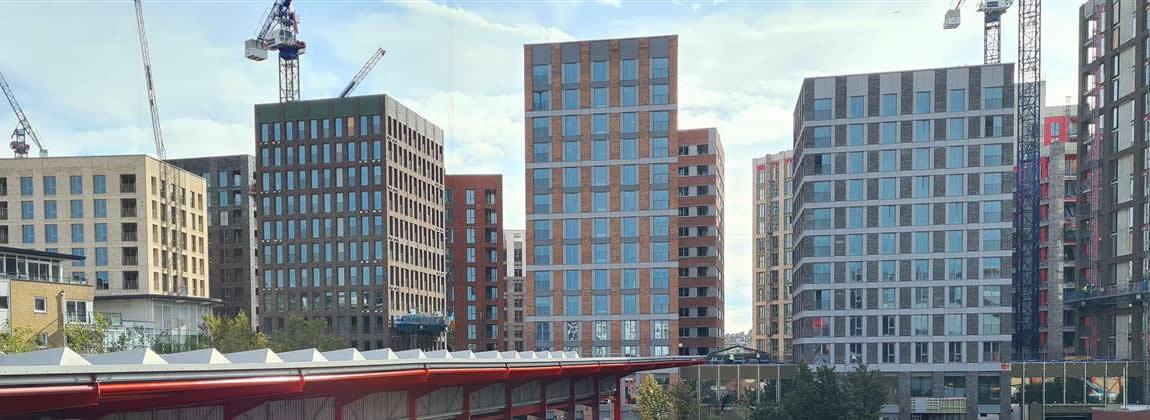
There may also be further stages before the facilities can be built including, potentially, a call-in by the Communities Secretary of States (Michael Gove or whoever is in charge at the time) or a judicial review by local residents opposed to the scheme.
UPDATE 22/11/2023: Added information on the Conservatives/Libdems motion to enforce the covenants and the video of the debate.


